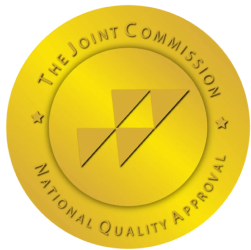Co-occurring disorders, a complex interplay of mental health and substance abuse challenges, represent a significant and intricate health concern in California. This intertwining of disorders necessitates a nuanced understanding and specialized treatment approach.
In the Golden State, where diverse populations and lifestyles converge, the prevalence and impact of these co-occurring conditions are pronounced. Addressing them effectively requires a comprehensive, empathetic, and tailored strategy.
Recognizing the unique needs of each individual, many mental health and addiction treatment centers in California integrate a spectrum of therapies and support systems. This holistic and patient-centered focus is pivotal in healing both the mind and soul, offering a hopeful path to those grappling with these intertwined challenges.

Understanding Co-Occurring Disorders
Co-occurring disorders, also known as dual diagnosis, refer to the simultaneous presence of a mental health disorder and a substance use disorder in an individual. This condition represents a complex and multifaceted health challenge, where the interplay between mental health issues and substance abuse creates a unique and often challenging scenario for treatment and recovery.
In understanding co-occurring disorders, it’s important to acknowledge that the relationship between mental health and substance abuse is often bidirectional.
Mental health disorders such as depression, anxiety, bipolar disorder, or schizophrenia can significantly increase the risk of substance abuse. People might turn to drugs or alcohol as a form of self-medication, attempting to alleviate symptoms of their mental health condition. However, this self-medication can lead to addiction, further complicating their mental health issues.
Conversely, chronic substance abuse can exacerbate or even trigger mental health disorders.
Substances like alcohol, opioids, and stimulants can alter brain chemistry and may precipitate or worsen mental health symptoms. For instance, prolonged alcohol use can lead to depression, while stimulants can heighten anxiety or trigger manic episodes in individuals with bipolar disorder.
The Cycle of Substance Abuse and Mental Health Disorders
This interplay creates a cycle that can be difficult to break. Substance abuse can mask mental health symptoms, making them harder to identify and treat. Similarly, untreated mental health issues can make it challenging to address substance abuse effectively. This complexity necessitates a specialized approach better known as dual diagnosis treatment.
Effective treatment for co-occurring disorders requires an integrated strategy that addresses both the mental health disorder and the substance use disorder simultaneously. This approach is distinct from treating each disorder in isolation.
Integrated Treatment
Integrated treatment plans typically involve a combination of pharmacotherapy, psychotherapy, behavioral therapies, and support groups. The goal is to provide a holistic treatment that addresses all aspects of the individual’s health, leading to a more sustainable recovery.
Understanding co-occurring disorders is crucial for developing effective treatment plans and providing comprehensive care. It requires a deep appreciation of the intricate relationship between mental health and substance abuse and a commitment to addressing these interconnected challenges with empathy and expertise.

Challenges in Treating Co-Occurring Disorders
Treating co-occurring disorders presents unique challenges that stem from the intricate interplay between mental health and substance use disorders. These challenges require a nuanced understanding and a comprehensive treatment approach to effectively address the complexities involved.
Diagnosis
Diagnosis poses a significant challenge. The overlapping symptoms of mental health and substance use disorders can obscure the clinical picture, making it difficult to distinguish between pre-existing mental health issues and those induced by substance abuse. For instance, substances like alcohol and drugs can mimic or exacerbate symptoms of depression or anxiety, complicating the process of accurate diagnosis.
Severity
Another challenge is the heightened severity of co-occurring disorders. Individuals with dual diagnoses often exhibit more severe symptoms of both mental illness and substance abuse, leading to an increased risk of suicide, hospitalization, and other serious outcomes. This severity necessitates a more intensive and tailored treatment approach.
Traditional Treatments Are Siloed
The traditional siloed treatment systems pose another hurdle. Historically, mental health services and substance abuse treatment were provided separately, often resulting in fragmented care that fails to address the complexity of co-occurring disorders. This disjointed approach can lead to suboptimal treatment outcomes, as one disorder may be treated while the other remains unaddressed, or worse, exacerbated.
The Importance Of An Integrated Treatment Approach
Recognizing these challenges underscores the importance of an integrated treatment approach. Integrated treatment involves a coordination of mental health and substance abuse services, offering a holistic approach to care.
This means treating both the mental illness and the substance use disorder simultaneously, in a cohesive and coordinated manner. Integrated treatment plans typically include a combination of medication management, psychotherapy, counseling, and support services, all tailored to the individual’s specific needs.
Such an approach not only addresses the symptoms more effectively but also considers the underlying causes and contributing factors of the co-occurring disorders. It fosters a more comprehensive understanding of the individual’s situation, leading to more effective and sustainable outcomes.
Integrated treatment recognizes the complexities of co-occurring disorders and offers a path forward that is nuanced, empathetic, and holistic, addressing the needs of the whole person rather than just individual symptoms or disorders.
Treatment Options in California
California, known for its progressive approach to healthcare, offers a diverse array of treatment options for individuals with co-occurring disorders. These treatment modalities are designed to cater to the varied needs of patients, ranging from intensive inpatient programs to flexible outpatient services, along with innovative holistic therapies.
Inpatient Treatment Programs
These provide a structured environment for individuals requiring intensive care. These residential programs offer round-the-clock supervision and support, making them ideal for those with severe symptoms or a history of recurrent relapse. Such facilities typically offer a combination of medication management, individual therapy, group therapy, and sometimes family therapy, ensuring a comprehensive approach to treatment.
Outpatient Treatment Options
In California, there are a variety of types. They range from intensive outpatient programs (IOPs) that require several hours of therapy per week to standard outpatient programs with less frequent sessions. These programs allow individuals to maintain their daily routines, such as work or school, while receiving consistent treatment. Outpatient treatment usually includes individual counseling, group therapy, and educational workshops, focusing on developing coping skills and relapse prevention strategies.
Specialized Programs
Additionally, California’s diverse cultural landscape means that many treatment centers offer specialized programs tailored to specific populations, including programs for adolescents, LGBTQ+ individuals, veterans, and more. This diversity ensures that treatment is not only accessible but also culturally sensitive and relevant.
In summary, California’s approach to treating co-occurring disorders is marked by its variety and depth, offering a range of options from inpatient to outpatient, and traditional to holistic therapies. The state’s renowned treatment centers and programs reflect a commitment to innovative, comprehensive, and personalized care, providing hope and support to those seeking recovery.

Holistic Approach to Treatment
Holistic approaches have gained significant traction in California, reflecting the state’s inclination towards integrative health practices. A holistic approach to treating co-occurring disorders acknowledges the complex interplay between physical, emotional, mental, and spiritual health.
This approach transcends traditional treatment methods by integrating complementary therapies, recognizing that true healing involves the whole person, not just the symptoms of their disorders.
These therapies include mindfulness and meditation, yoga, art therapy, equine-assisted therapy, and nature-based interventions. Holistic therapies aim to treat the whole person, addressing mental, emotional, physical, and spiritual aspects of well-being, often complementing traditional treatment methods.
Mindfulness Meditation
Mindfulness is a cornerstone of this holistic approach. It teaches individuals to focus on the present moment, cultivating an awareness that can help manage stress and reduce symptoms of mental health disorders. Mindfulness practices, such as meditation, encourage a non-judgmental awareness of thoughts and feelings, fostering emotional regulation and resilience against substance abuse triggers.
Yoga
Yoga, another key component, offers both physical and mental benefits. It combines physical postures, breath control, and meditation to improve overall well-being. For those with co-occurring disorders, yoga can enhance physical health, reduce anxiety and depression symptoms, and promote a sense of calm and centeredness, aiding in recovery.
Art Therapy
Art therapy offers a creative outlet for expression and self-exploration. It allows individuals to communicate feelings that might be difficult to express verbally, facilitating emotional release and insight. This form of therapy can be particularly therapeutic for those who have experienced trauma or struggle to articulate their experiences and emotions.
Nutrition
Nutrition also plays a crucial role in the holistic treatment of co-occurring disorders. Proper nutrition can help repair the physical damage caused by substance abuse, boost mood and energy levels, and support overall mental health. Nutritional counseling and diet plans tailored to individual needs can significantly enhance the effectiveness of treatment for co-occurring disorders.
Equine-Assisted Therapy
This type of therapy offers a unique, experiential treatment for individuals with co-occurring disorders. This therapy involves interaction with horses, which can facilitate emotional growth and learning. It helps in building trust, enhancing self-esteem, and improving communication skills, making it a powerful tool for those seeking healing and emotional balance.
Nature-Based Interventions
Nature-based therapy harnesses the healing power of the natural environment to treat individuals with co-occurring disorders. Immersion in nature can reduce stress, enhance mood, and promote a sense of peace. Activities like hiking, gardening, or wildlife observation encourage mindfulness and a deeper connection with oneself, aiding in holistic healing.
Summary
Incorporating these holistic therapies into a treatment plan for co-occurring disorders offers a more comprehensive approach, addressing various aspects of an individual’s health. This integrative strategy not only aids in recovery but also promotes a sustainable path to long-term wellness and resilience.

Success Stories
These short stories illustrate the potential of integrated treatment for those with co-occurring disorders:
Ed’s Journey: Ed, a 45-year-old battling alcoholism and depression, found solace in a holistic treatment program. Initially skeptical, he embraced therapies like mindfulness and art therapy. These practices, coupled with traditional counseling, transformed his life. He shares, “I rediscovered myself. I’m not just sober; I’m genuinely happy, something I hadn’t felt in years.”
Emma’s Empowerment: Emma, a 30-year-old struggling with anxiety and opioid addiction, credits her recovery to the integrated treatment she received. The combination of medication, cognitive-behavioral therapy, and yoga made a significant impact. She reflects, “Yoga taught me to breathe through my anxiety, and therapy gave me the tools to rebuild my life. I feel empowered and in control now.”
David’s Discovery: After a long battle with bipolar disorder and cocaine addiction, David, 38, found hope in an inpatient program. The structured environment and group therapy sessions helped him understand his triggers. Wilderness hikes and wildlife photography became his passion as he was able to reflect on his life in the context of animals he encountered in nature. He states, “The program didn’t just treat my addiction; it addressed the root of my issues. I’ve not only recovered, but I’ve also found a new passion for life.”
Navigating Insurance and Financial Options
Navigating insurance and financial options for co-occurring disorders treatment can be daunting but is crucial for accessing necessary care. It’s important to thoroughly understand your health insurance policy. Many insurance plans, especially since the implementation of the Affordable Care Act, provide coverage for mental health and substance abuse treatment.
Contact your insurance provider to clarify the specifics of your coverage, including deductibles, copays, and any limits on treatment types or duration.
If your insurance coverage is limited or if you’re uninsured, explore financial aid options. Many treatment centers offer sliding scale fees based on income, making treatment more accessible to those with financial constraints. Additionally, some centers have scholarship programs or provide financing options to help manage the cost of treatment.
State and federal programs can also be a resource. For example, Medicaid programs may cover certain types of treatment for eligible individuals. Non-profit organizations and community health centers often provide services at reduced costs or even for free, based on need.
Lastly, don’t hesitate to discuss financial concerns directly with treatment providers. Many are willing to work with patients to find feasible solutions, ensuring that financial barriers do not impede access to vital treatment.
Choosing the Right Treatment Center
Choosing the right treatment center for co-occurring disorders is a critical step toward recovery. When selecting a facility, consider several key factors:
Staff Expertise: Look for centers with a multidisciplinary team experienced in treating co-occurring disorders. This team should include mental health professionals, addiction specialists, and medical staff. Verify their credentials and ask about their experience in handling cases similar to yours or your loved one’s.
Treatment Modalities: Ensure the center offers a range of evidence-based therapies suitable for co-occurring disorders, such as cognitive-behavioral therapy, medication-assisted treatment, and holistic therapies like mindfulness or art therapy. The facility should provide individualized treatment plans, tailored to meet the specific needs of each patient.
Aftercare Support: Effective treatment doesn’t end at discharge. Inquire about the center’s aftercare planning and support. This may include outpatient therapy, support groups, or relapse prevention education, vital for sustaining long-term recovery.
When contacting a potential treatment center, ask targeted questions:
- What is your approach to treating co-occurring disorders?
- Can you provide examples of treatment plans for similar cases?
- How do you tailor treatment to individual needs?
- What types of therapies and activities are included in the program?
- How is family involvement incorporated into treatment?
- What aftercare support and resources do you offer post-treatment?
Selecting the right treatment center involves careful consideration of these factors, ensuring the facility aligns with the individual’s specific needs and promotes the best chance for a successful recovery.
Living with Co-Occurring Disorders: Tips for Long-term Management
Living with co-occurring disorders is an ongoing journey that extends well beyond initial treatment. Long-term management is key to maintaining wellness and preventing relapse. Here are some essential tips for navigating this path:
Continuous Therapy: Regular therapy sessions, whether individual, group, or family-based, are vital. They provide a safe space to discuss challenges, track progress, and modify coping strategies as life evolves. Ongoing therapy is crucial for addressing underlying mental health issues and reinforcing skills learned during initial treatment.
Medication Management: If medications are part of the treatment plan, consistent adherence and regular consultations with healthcare providers are important. Medications may need adjustments over time, and healthcare providers can monitor effectiveness and side effects.
Support Networks: Building and maintaining a strong support network is invaluable. This network can include family, friends, support groups, and peers from recovery communities. They provide emotional support, understanding, and accountability, which are crucial for long-term management.
Healthy Lifestyle Choices: Incorporating healthy habits such as regular exercise, a balanced diet, and adequate sleep can significantly impact mental and physical health. These habits bolster overall well-being and resilience against stress.
Mindfulness and Stress Reduction: Practices like mindfulness, meditation, or yoga help in managing stress and maintaining emotional balance. They can improve focus, reduce anxiety, and enhance one’s ability to handle triggers.
Setting Realistic Goals: Setting achievable goals and celebrating small victories along the recovery journey can boost confidence and motivation. It’s important to recognize progress, no matter how small.
Relapse Prevention Plan: Having a clear relapse prevention plan is crucial. This plan should include recognizing warning signs, coping strategies to deal with triggers, and a clear action plan if a relapse occurs.
Living with co-occurring disorders requires a comprehensive and proactive approach. By prioritizing ongoing therapy, support networks, healthy lifestyle choices, and stress management, individuals can manage their disorders effectively and lead fulfilling lives.

Conclusion
Treating co-occurring disorders in California involves a multifaceted approach that addresses both mental health and substance abuse issues simultaneously. The state’s array of treatment options, from inpatient and outpatient programs to holistic therapies, caters to diverse needs.
Central to this approach is the emphasis on integrated treatment, combining various modalities like psychotherapy, pharmacotherapy, and supportive therapies such as mindfulness and yoga.
California’s commitment to innovative and comprehensive care provides a strong foundation for recovery. If you or someone you know is facing these challenges, remember, effective treatment and support are available. Seeking appropriate care is a crucial step towards healing and a brighter, healthier future.
Key Takeaways
- Co-occurring disorders, a complex interplay of mental health and substance abuse challenges, represent a significant and intricate health concern in California.
- Holistic and patient-centered focus is pivotal in healing both the mind and soul
- Co-occurring disorders, also known as dual diagnosis, refer to the simultaneous presence of a mental health disorder and a substance use disorder in an individual.
- Treating co-occurring disorders presents unique challenges.
- Treatment approaches, designed to cater to the varied needs of patients, range from intensive inpatient programs to flexible outpatient services, along with innovative holistic therapies.
- A holistic approach to treating co-occurring disorders acknowledges the complex interplay between physical, emotional, mental, and spiritual health.
- These therapies include mindfulness and meditation, yoga, art therapy, equine-assisted therapy, and nature-based interventions.
- Navigating insurance and financial options for co-occurring disorders treatment can be daunting but is crucial for accessing necessary care.
- Choosing the right treatment center for co-occurring disorders is a critical step toward recovery.
- Living with co-occurring disorders is an ongoing journey that extends well beyond initial treatment. Long-term management is key.





